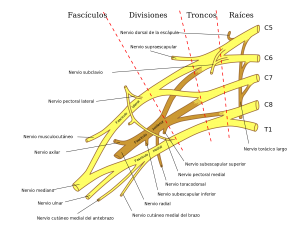Function of Cervical Spine Nerves
The cervical spine anatomy consists of seven cervical vertebrae and eight cervical spine nerves named C1-C8. These spine nerves branch out from the spinal cord and they are responsible for sensory activities and they also control different types of body functions as well.
These cervical spine nerves in the spinal column that branch out from the nerves play the key role in relaying messages as well as making sure the different body parts function accordingly. Let us take a look at the functions of different spine nerves:
- The first two cervical nerves C1 and C2 are responsible for controlling the head
- The next two nerves C3 and C4 control the diaphragm
- C5 is responsible for controlling the deltoids- the upper body muscle
- C6 is responsible for controlling the wrist extensors
- C7 controls the triceps and C8 is responsible for controlling the hands
Cervical Nerves & the Spinal Cord
The cervical nerves branch off of the nerve into the spinal column. The spinal cord starts from the base of the brain and then extends throughout the cervical and thoracic spine. It ends in the lowest part of the thoracic spine. This is why when the spinal cord is damaged or injured it may result in disorder or disease of the thoracic or cervical spine.
How Cervical Spine Nerves Relay Pain
 The cervical nerves and cervical spine (neck) are very delicate and this part of the spinal cord is responsible for sending messages from the brain to control all aspects of the body. The cervical spine column is made very intricately and is complex which is why when it endures trauma or is stressed too much then it is at risk for developing conditions like neck cervical spine pain or neck pain. The cervical spine nerves relay pain through conditions namely:
The cervical nerves and cervical spine (neck) are very delicate and this part of the spinal cord is responsible for sending messages from the brain to control all aspects of the body. The cervical spine column is made very intricately and is complex which is why when it endures trauma or is stressed too much then it is at risk for developing conditions like neck cervical spine pain or neck pain. The cervical spine nerves relay pain through conditions namely:
- Stiff neck
- Cervical herniated disc
- Cervical degenerative disc disease
- Cervical osteoarthritis
- Cervical stenosis



